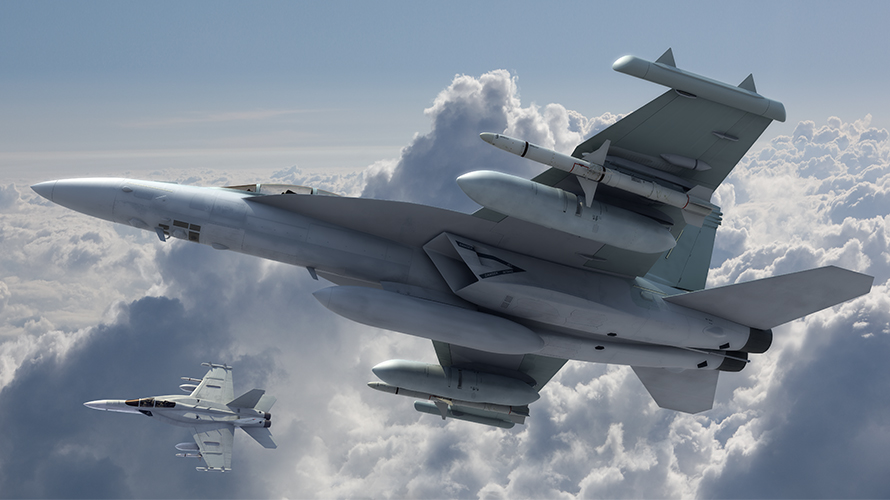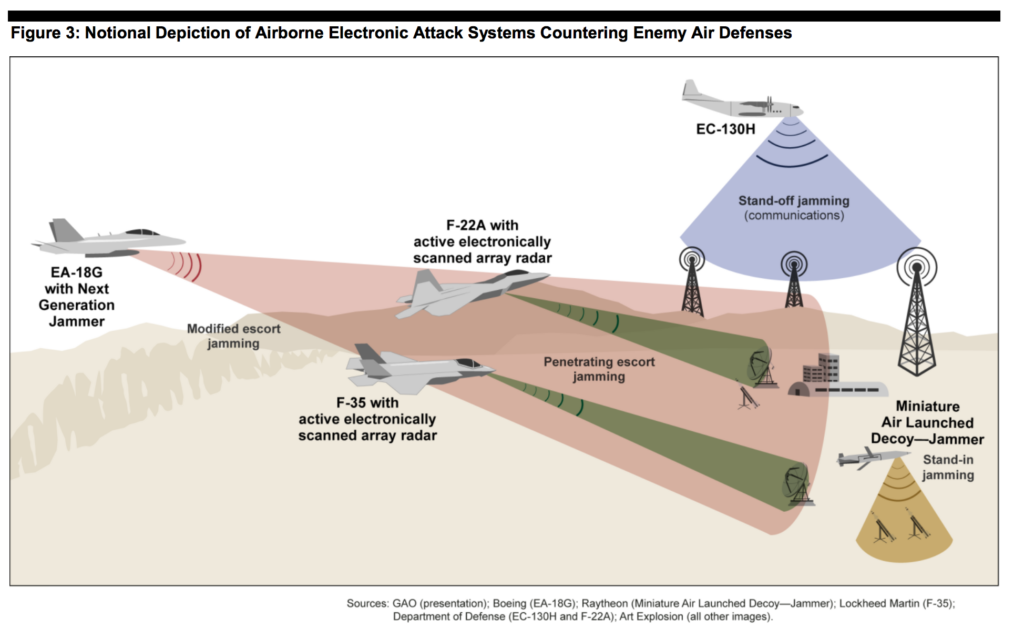
FARNBOROUGH AIR SHOW The U.S. Navy hopes to start flying its Next Generation Jammer some time next year, though the system won’t reach operational capability until 2022, said Navy Capt. Michael Orr, program manager for the service’s electronic attack systems.
As it stands now the Navy’s principal airborne electronic attack systems relies on technology developed in the 1970’s: While the service has switched from the old EA-6B Prowler to the new EA-18G Growler as its electronic attack aircraft, the actual radar-jamming systems on the aircraft are largely the same. Service leaders are worried that with rapid advances by China and Russia in electromagnetic warfare will put their pilots at a major disadvantage, sooner rather than later.
In 2016 Raytheon won a $1 billion award to build the Next Generation Jammer. The Navy plans to spend $1.5 billion on NGJ development between 2019 and 2022.
Orr said that the analog AN/ALQ-99 pods currently on the aircraft will continue in use even after the all-digital NGJ pods are installed, and that the Navy has a co-development program with the Australian government to develop the system. He would not comment further on the Aussie involvement, or what other aircraft the NGJ might be integrated on in the future.

While older aircraft like the EA-18G and EC-130H jam enemy systems from a distance, stealthy F-22s and F-35s can conduct electronic warfare at close range.
Norway’s top officer on his ‘biggest challenge,’ next frigate and new NATO neighbors
Gen. Eirik Kristoffersen, Norway’s Chief of Defense, talks to Breaking Defense about his plans for spending on new frigates and subs, the challenges of upgrading Norway’s “digital backbone” and refilling the military’s stocks.


























